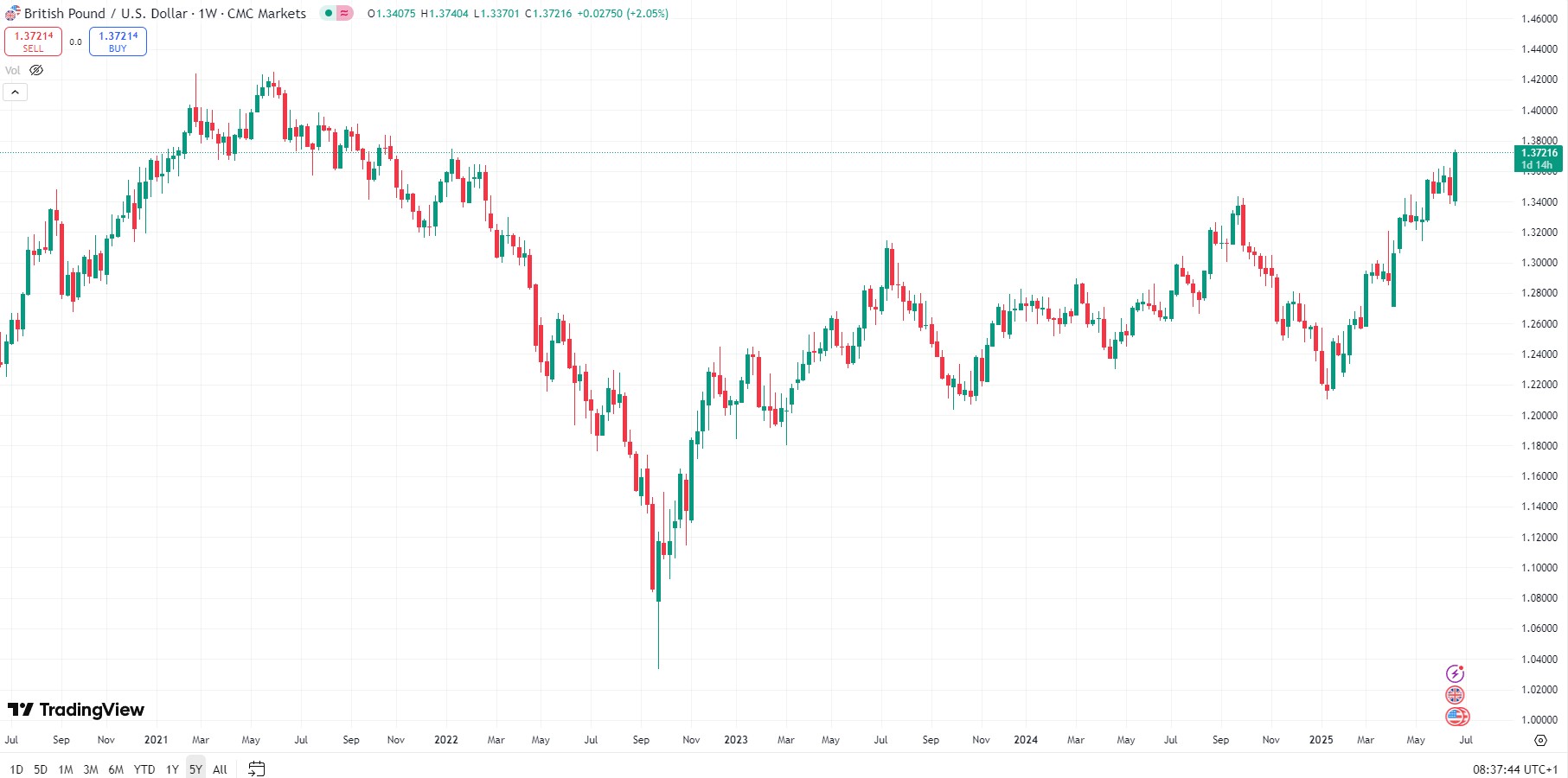Pound rises on dollar retreat, but headwinds mount
The pound climbed against the US dollar overnight, with GBP/USD rising over 0.65% compared to the previous day, trading over £/$ 1.37 at interbank a rate not breached since Jan 2022. However, this movement was more a result of growing negativity surrounding the dollar than any fresh enthusiasm for risk or renewed confidence in sterling.

Despite the apparent calm, conditions don’t quite reflect a genuine shift towards risk-taking. Sterling, typically sensitive to global investor sentiment, would usually benefit more in a true risk-on environment. While markets appear less jittery than during episodes of oil price surges linked to geopolitical crises, the underlying picture remains precarious.
On the global front, Donald Trump's unpredictable policy signals are dampening business investment and trade. Closer to home, UK wage growth is losing momentum, and more people are exiting the workforce entirely — a trend noted by Bank of England Governor Andrew Bailey. Combined with the Bank’s ongoing dovish tone, this is leaving sterling exposed to further pressure.
The pound is also being dragged down by debt-related challenges. The Bank of England's programme of quantitative tightening (QT) has increased the supply of long-term government bonds, which has pushed yields higher. But in this case, rising yields are not a reflection of economic optimism. Rather, they point to a market demanding greater compensation for inflation worries and lingering questions around fiscal policy.
Governor Bailey acknowledged these concerns this week by suggesting the pace of QT could be reconsidered to avoid worsening the situation. His remarks coincide with a difficult moment for Chancellor Rachel Reeves. Her strict fiscal rules offer little room to manoeuvre, and with national debt now exceeding 100% of GDP and long-term borrowing costs nearing their highest levels since 1998, debt servicing burdens are mounting. This adds to the growing list of challenges weighing on the pound.
In summary, while the easing of geopolitical concerns gave markets a brief lift, the pound remains on shaky ground. Weak domestic economic indicators, tight fiscal constraints, and a Bank of England reluctant to tighten policy all point to further downside risks for sterling in the weeks ahead.
Dollar weakness lifts euro to new highs as sentiment shifts
The euro has jumped above $1.17 in early London trading, reaching levels not seen since 2021. The rise reflects growing pressure on the US dollar rather than a dramatic shift in favour of the euro itself. The dollar had gained briefly during recent geopolitical uncertainty, thanks to its traditional role as a safe haven, but that support has largely faded. With tensions easing, the dollar has come under renewed selling pressure, helping to lift the euro by nearly 2% over the course of the week.

Attention is now turning to a wave of upcoming US economic data, including figures on durable goods, personal income, inflation (via the PCE index), and consumer sentiment from the University of Michigan. Expectations for these reports are subdued, and weak results would likely deepen concerns about the strength of the US economy, further undermining the dollar.
In parallel, month-end portfolio adjustments are beginning to influence markets. US equities have outperformed globally this month, with the S&P 500 up 3.1 percent, prompting asset managers to rebalance by reducing dollar holdings. What makes this month’s pattern unusual is that the dollar's earlier strength, driven by geopolitical anxieties, has intensified the need for these rebalancing flows. Normally, a weaker dollar would limit this effect.
Politics is also adding a layer of complexity. A recent Wall Street Journal article suggested that Donald Trump may look to speed up the appointment of the next Federal Reserve Chair. That has fuelled speculation that an accelerated shift toward interest rate cuts could be on the horizon.
The euro continues to benefit from the dollar’s decline, but investors are now looking for signs of strength from within the eurozone to sustain the rally. One such sign is the improvement in the Citi Economic Surprise Index, which has moved from negative territory in early May to a reading of 26. This suggests economic data in the region is increasingly beating expectations.
Still, while the upward trend is encouraging, the index would need to rise further to meaningfully bolster the euro’s position. For now, dollar weakness remains the primary driver, but a more convincing European growth narrative may be required to push the currency even higher.






